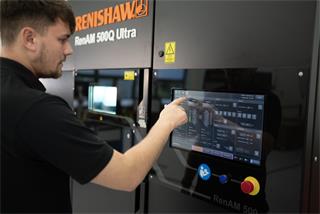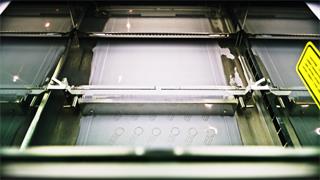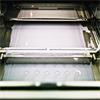An introduction to TEMPUS™ technology for additive manufacturing
Author: Matt Parkes, AM Strategic Development Manager at Renishaw
In a laser powder bed fusion (LPBF) metal additive manufacturing process, powder recoating time has historically had a negative impact on build speed, because the laser stops firing while the recoater is moving. Here Matt Parkes, AM Strategic Development Manager at global engineering technologies company, Renishaw, explains the benefits of TEMPUS™ technology. This new innovation mitigates the cost of recoating on build time and can enhance additive manufacturing (AM) productivity for Renishaw's RenAM 500 series of metal AM systems.
Traditionally in LPBF, the laser will stop firing while the recoater adds a new layer of material; the two processes are controlled separately due to technical limitations. Recoating the build plate typically takes under ten seconds per layer, but with builds often made up of thousands of layers, these small delays can add up to tens of hours over an entire build.
Cutting build times
Reducing cost per part is a priority for many manufacturers and vital for greater AM adoption. Increasing the productivity of existing AM systems is key to achieving this as the majority of part cost results from on-machine build time.
Rather than increasing machine size and adding more lasers — which has big trade-offs in terms of increased system cost, factory space and material — Renishaw focused on how we could boost efficiency by utilising the recoating time.
As we design and manufacture our own build and control systems in-house, we realised that we could connect our recoater and laser control systems.
This would allow the lasers to fire while the recoater is moving without the risk of hitting it. This concept led us to develop TEMPUS technology, a software-driven technology that synchronises the laser, recoater and elevator systems, using timing data to optimise the process productivity. As a result, our AM system users gain advanced control of laser positioning and timing, enabling the laser to start firing as soon as the recoater adds a new layer of powder to the target area.
By optimising laser activity, TEMPUS technology enables significant productivity gains that dramatically improve system cost-effectiveness. This almost entirely removes laser downtime caused by spreading a new powder layer, saving up to nine seconds every layer. For manufacturers in serial AM production, TEMPUS technology delivers the highest productivity levels possible at scale.
The proportional time saving depends on the part geometry and number of lasers, but in some cases, users can reduce build time by up to 50%. If builds that previously took multiple shifts can now be built in one, manufacturers could double their production output using the same number of machines.
Controlling productivity
TEMPUS technology can be retrofitted onto both single and multi-laser RenAM 500 systems, maximising existing investments. The software integrates with Renishaw's existing QuantAM build preparation software, which enables efficient computer aided design (CAD) model preparation.
With TEMPUS technology, once the model is designed, users can optimise the speed of the laser and recoater, either using our preset parameters, or by adjusting settings themselves.
This productivity upgrade will benefit existing AM applications and potentially other applications where AM was previously discounted due to perceived higher production costs. With TEMPUS technology, Renishaw's AM systems could deliver the part performance and cost savings needed to scale a user's production, whether they're an existing AM user or exploring the technology's benefits for the first time.





